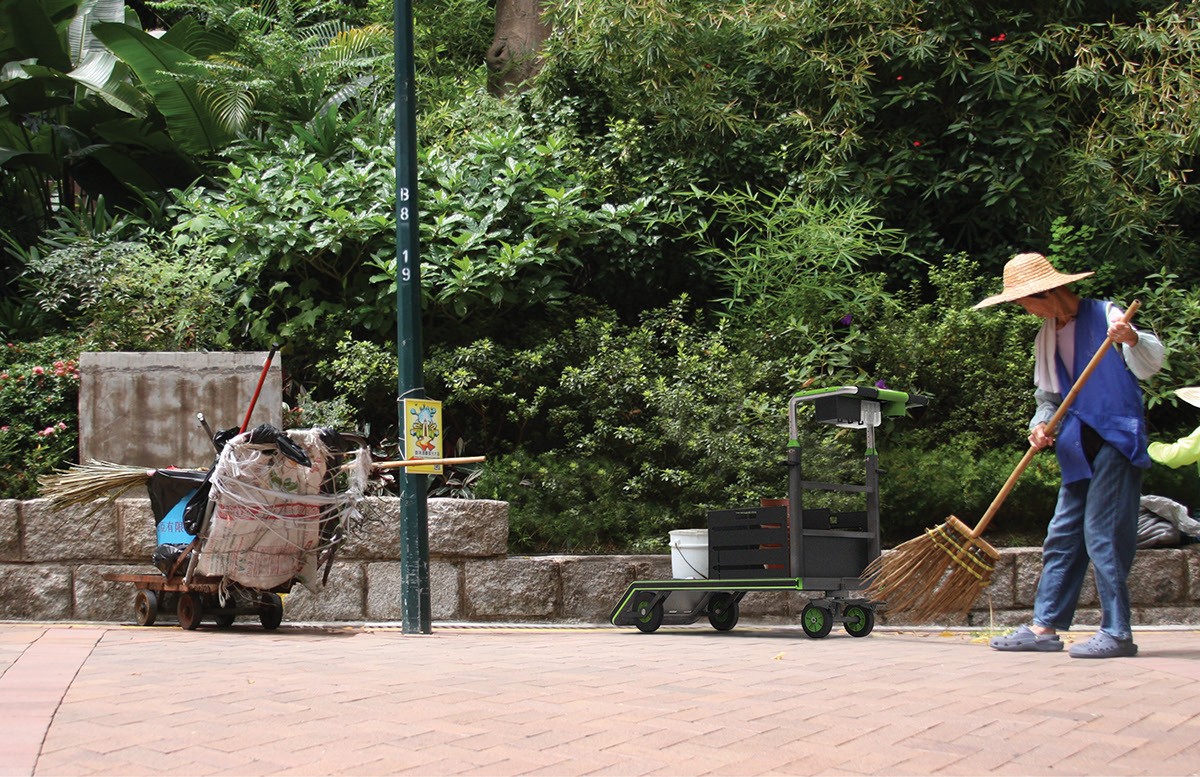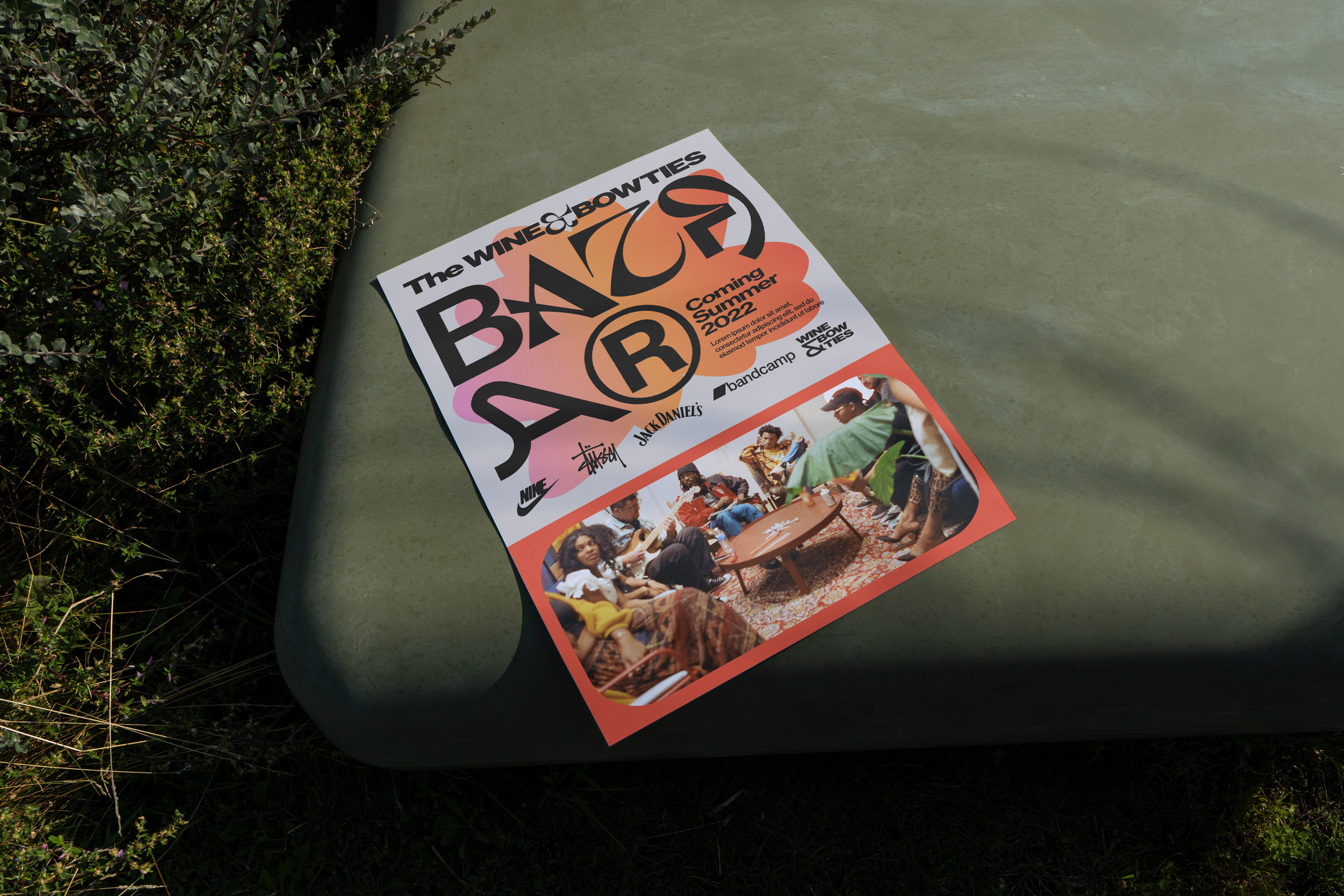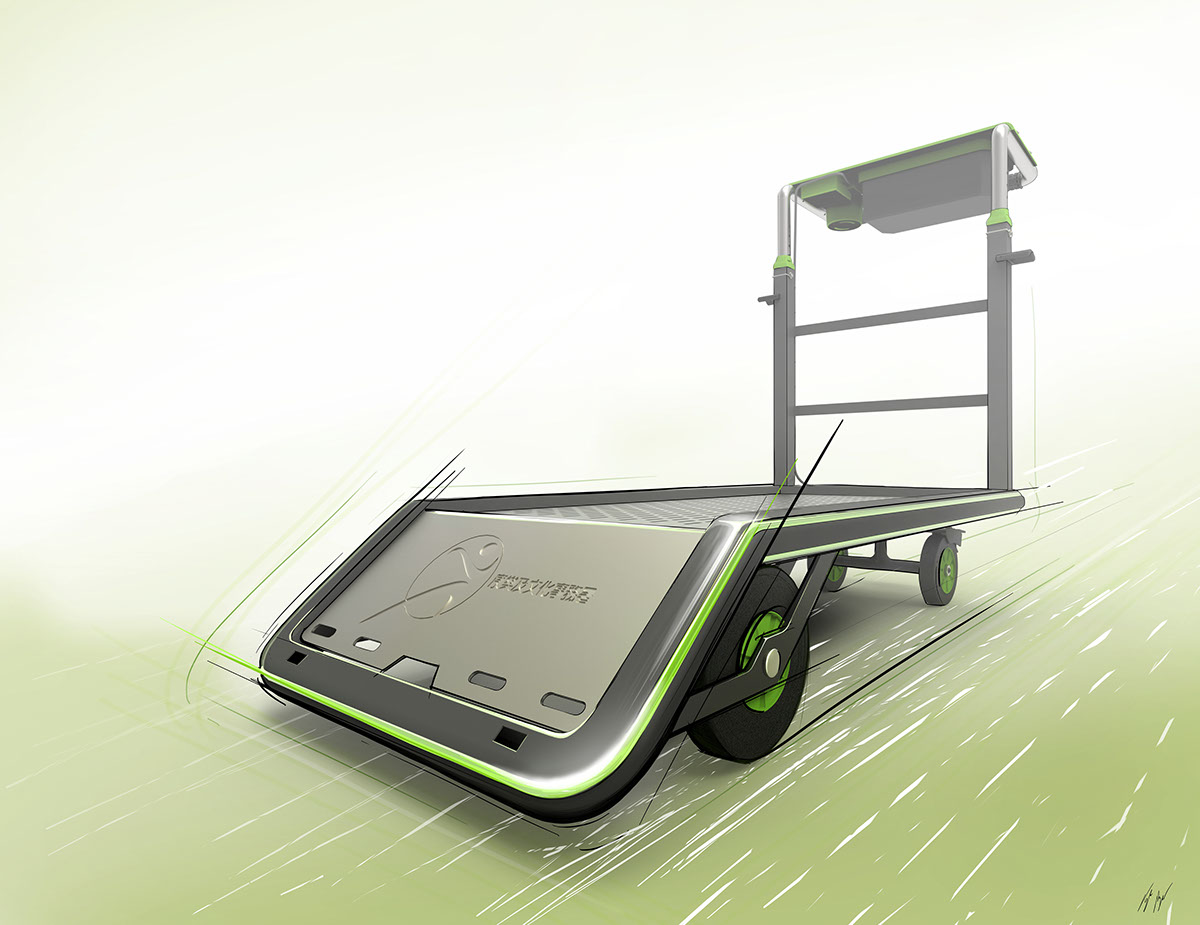

Design Brief
We will integrate human factors and appropriate materials into essential occupations and products, without compromising employment, culture or health for the peoples of Hong Kong.
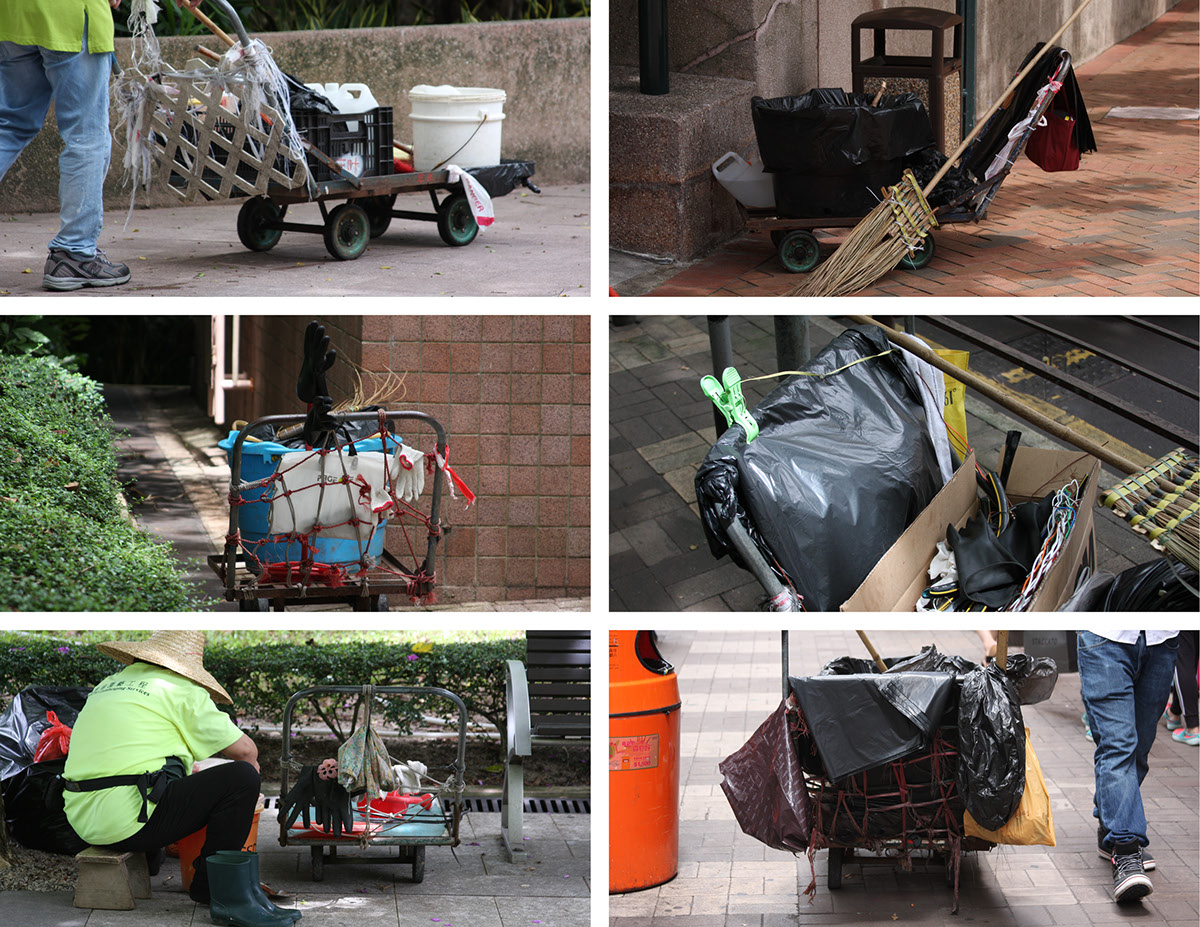
The sudden change in culture from the United States to Hong Kong gave us ample room to identify a number of opportunities to explore a cultural design application. Umbrellas, sanitary masks, brooms, luggage, and street carts were most noticeable trends throughout Hong Kong daily life. The carts were used for trash collection, gardening, and delivery to small markets and stores. We noticed constant customization of the carts and couldn’t help but start having ideas for design opportunity.
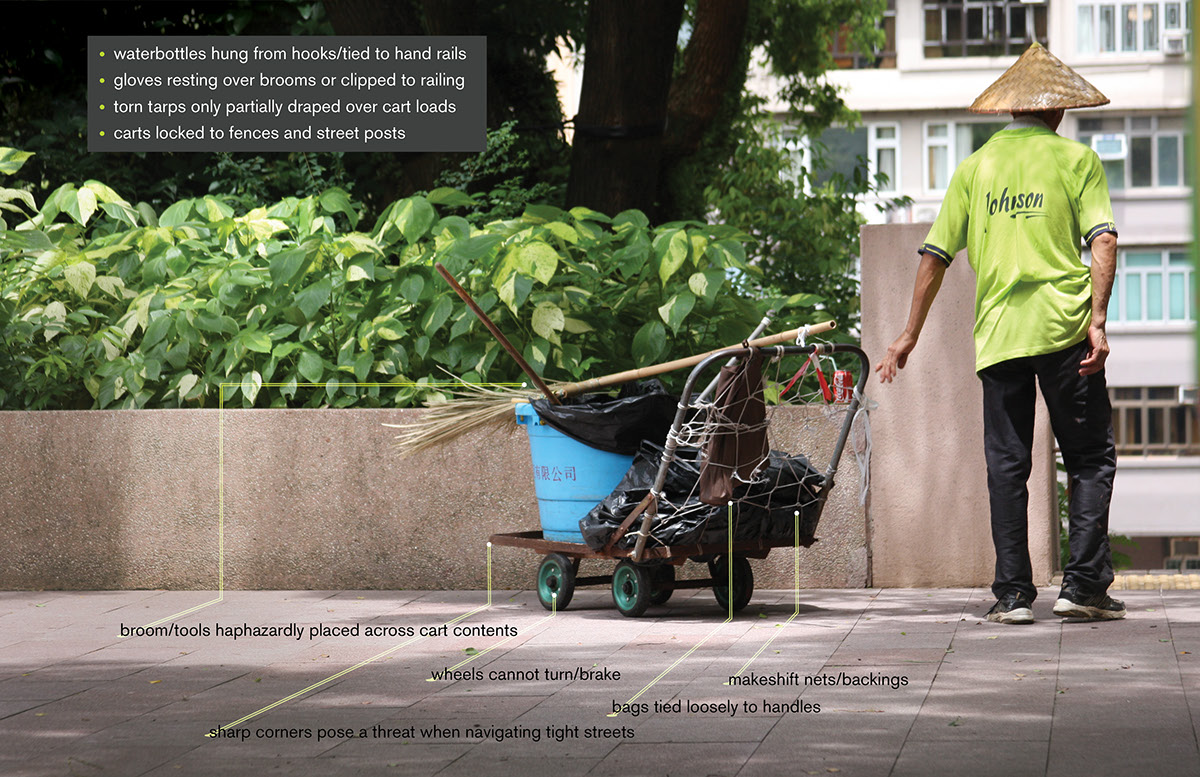
We began ideation with two major directions for our design; manufactured attachments or a complete overhaul of the cart's current design.
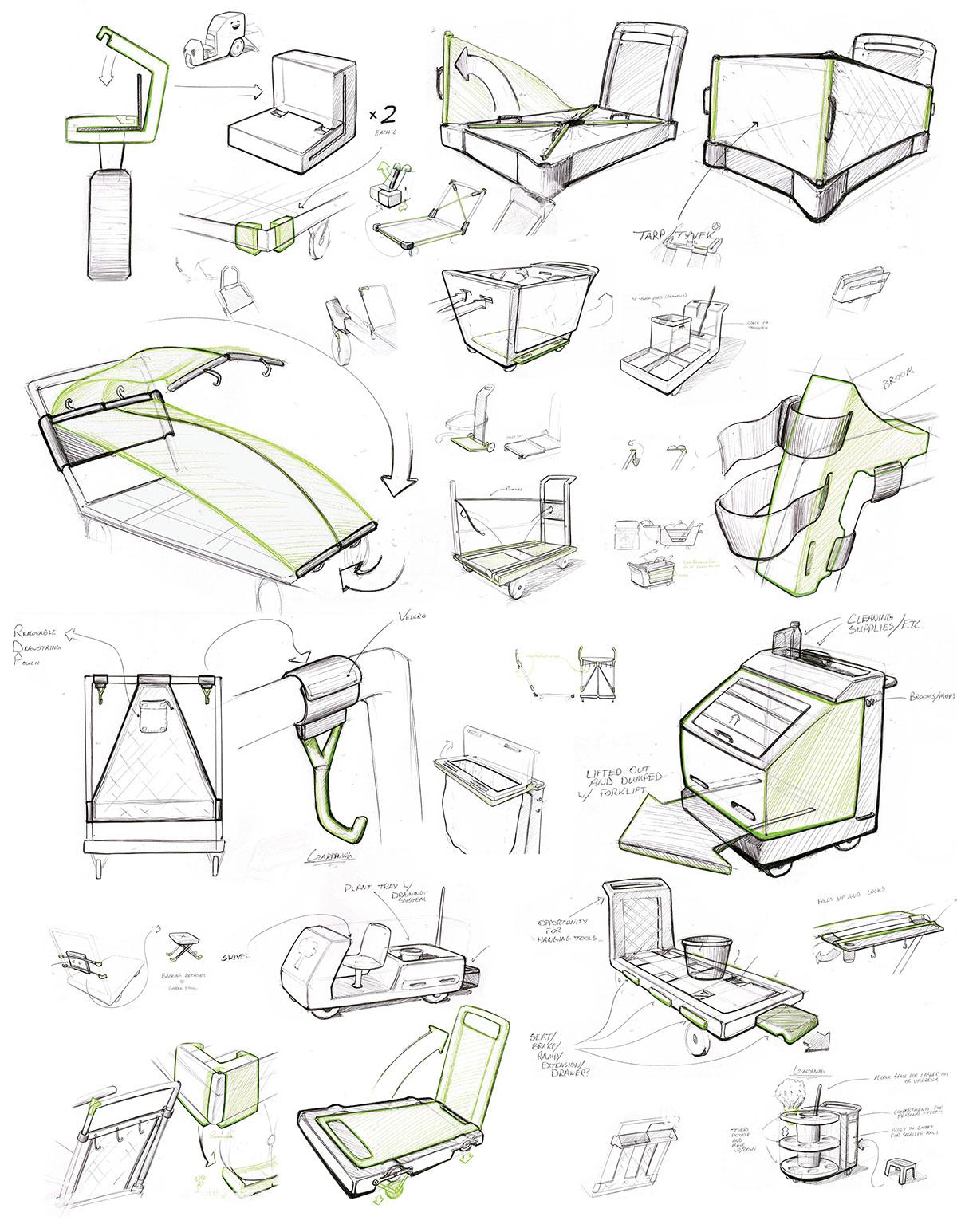
When approaching this project, we wanted to design for the people of Hong Kong. With this in mind we took it upon ourselves to rework the process and design of their current cart using the same materials and methods that were currently in place. We removed some processes and matched angles within the form so different pieces of the cart could be manufactured through the same process. We offered more user friendly attachment points and a more optimal handle height, as we had noticed many citizens of Hong Kong with severe back injury from constantly bending over.
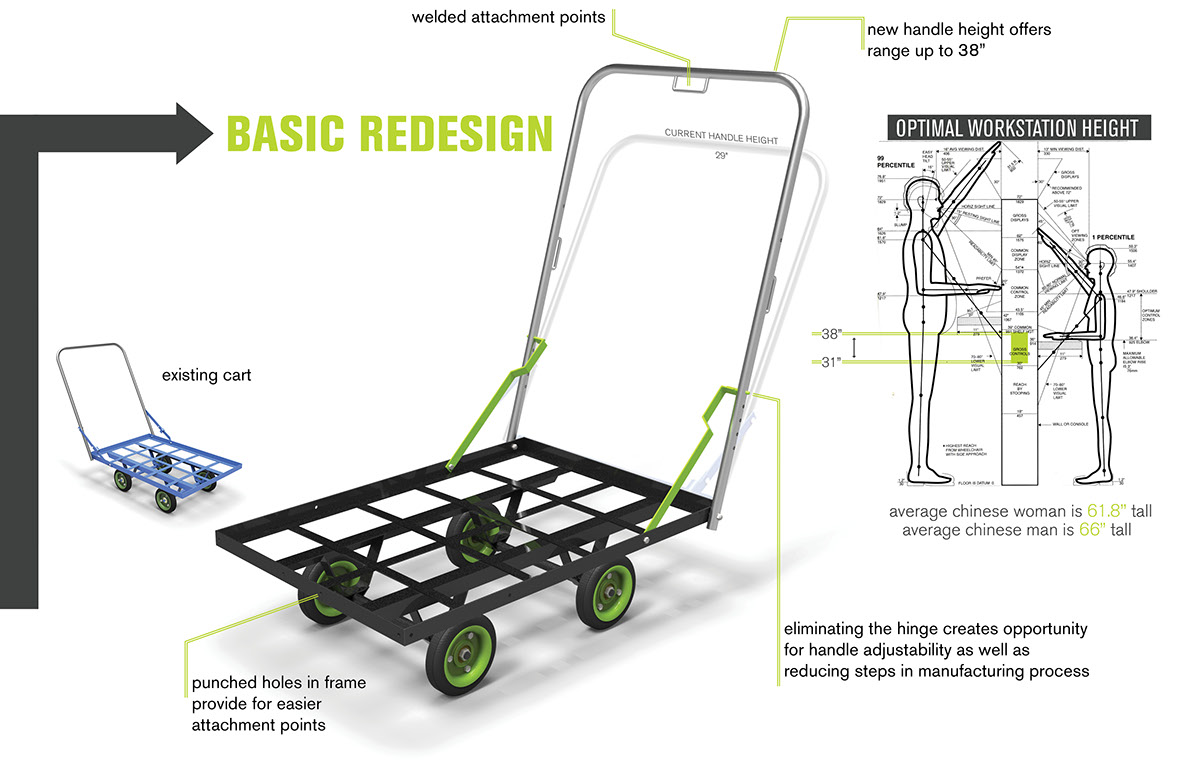
When it came to solving the issues we found facing trash collection and gardening, using anything close to the current cart design was simply out of the question. Integrating many of the attachment ideas into a new durable and optimal cart became necessary. While we wanted to offer the people of Hong Kong something beautiful and pre-fabricated to meet their needs, we also wanted to leave room for them to be able to customize their carts and develop an emotional connection that many already had established.
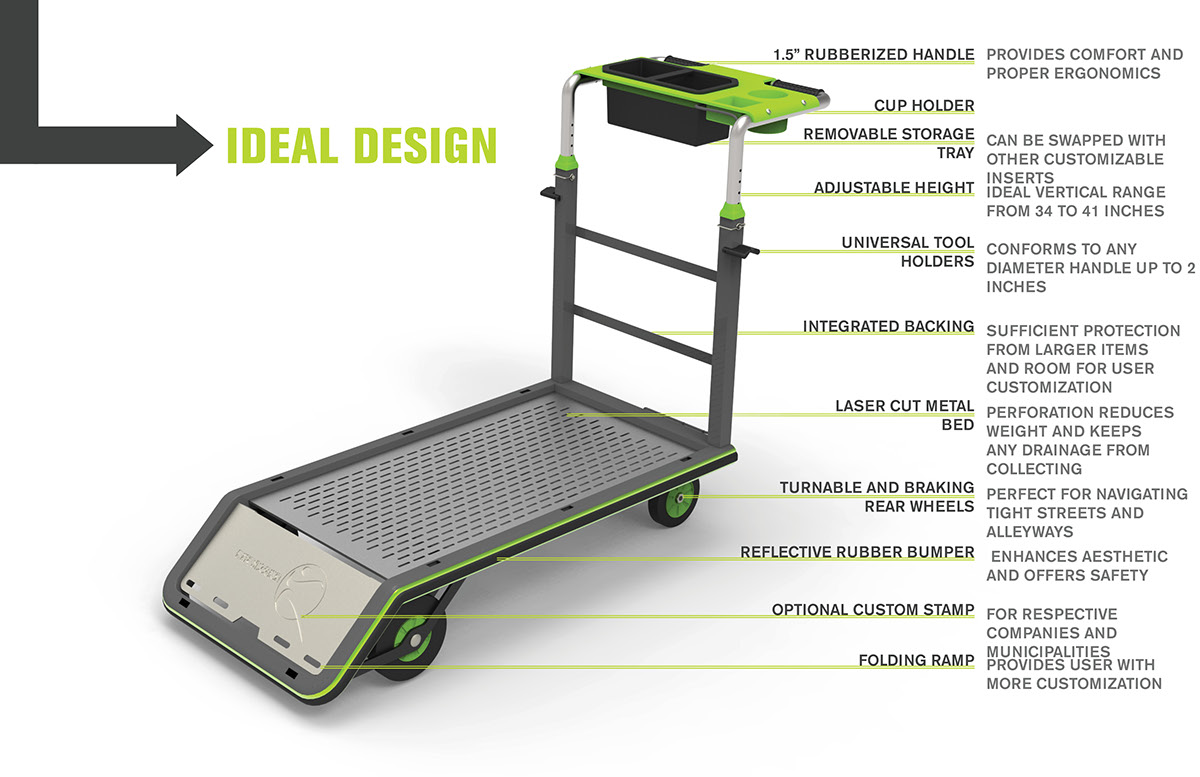
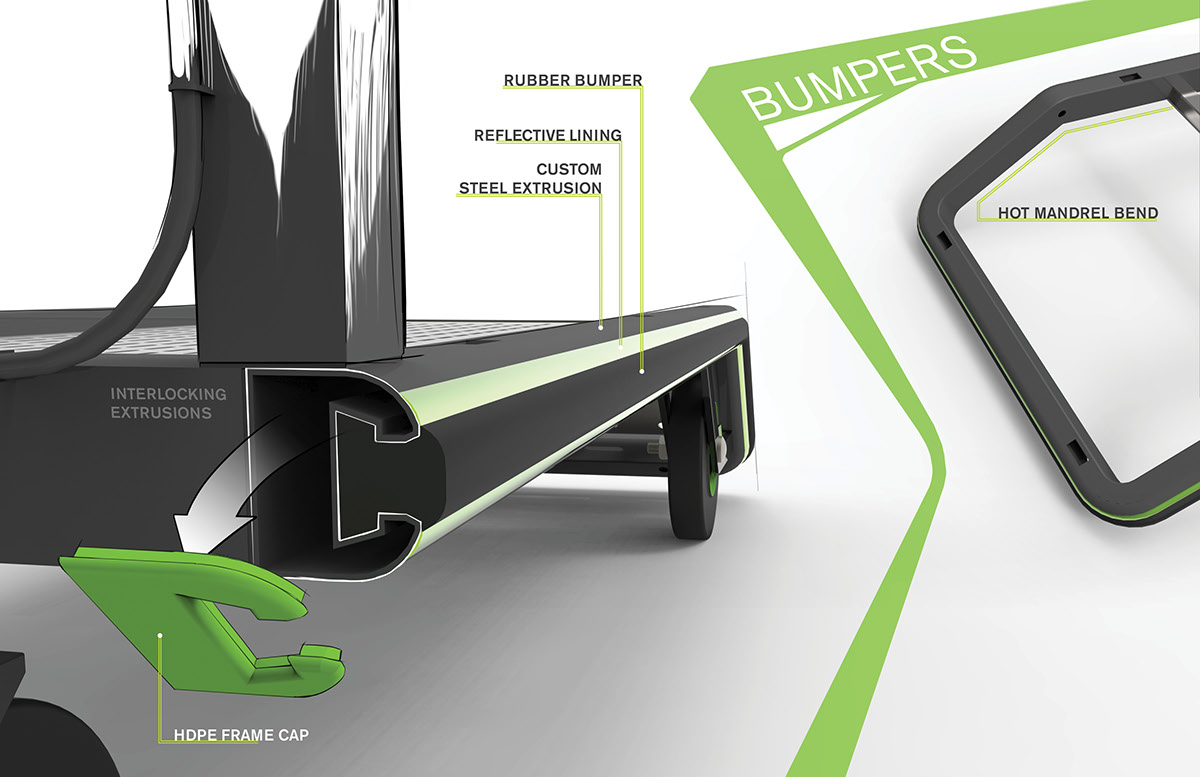


The streets of Hong Kong are very tightly knit and constantly bustling with all manner of people. When navigating these small spaces, many times people are injured by carts or even trapped in markets or alleyways until the carts can be maneuvered somewhere else.
The issue needed solving and the best way to fix it was to integrate a turning mechanism within the cart. The axis on which the cart turned is in the rear, which reduces stress on the wrist of the user and provides more opportunity to navigate tight corners.
The user end of the mechanism works very much like that of a bike brake lever. The user simply pulls the lever on the ride half of the handle towards themselves to release a turning pin.The turning pin is spring loaded but when lifted by the user it allows the back wheels to pivot up to a full 360º. The pin rests along a channel within a protective housing near where the axis meets the frame of the cart. By simply releasing the turning lever, the pin will eventually fall back into the hole that it was originally resting in, thus locking the back wheels in their default angle.

With a focus on strength and reliability comes increased cost of manufacturing and we realized this but wanted to create something that could be potentially bought in mass by a larger municipality and be distributed amongst the workers. This cart is built to last and should withstand the test of time.

